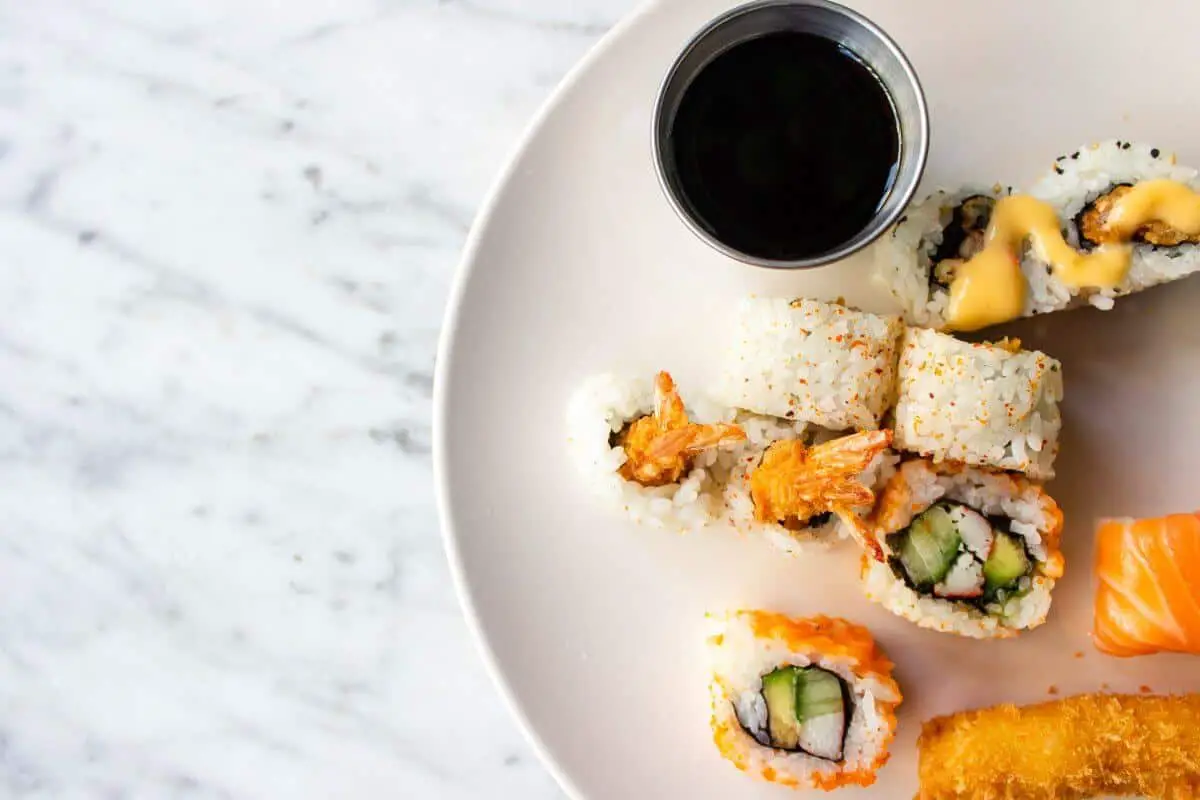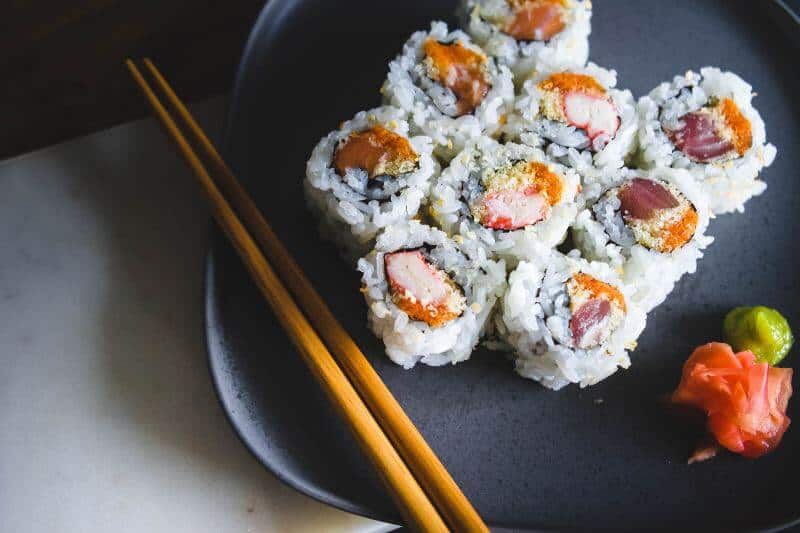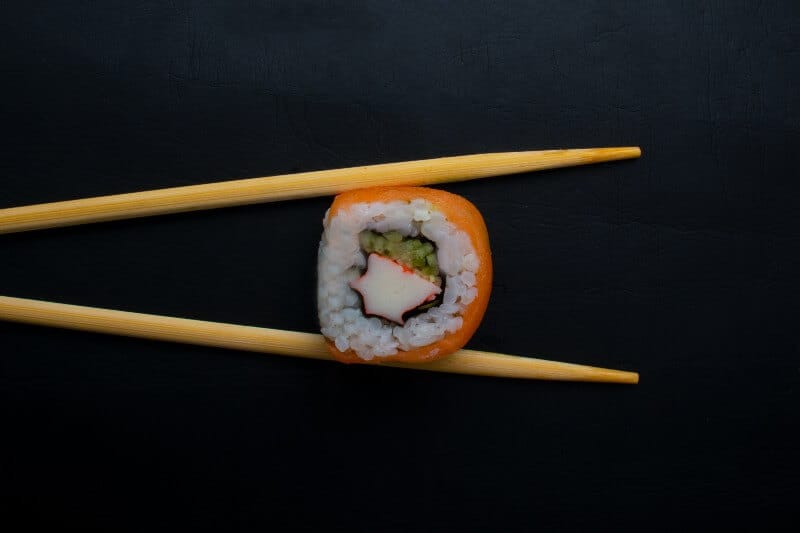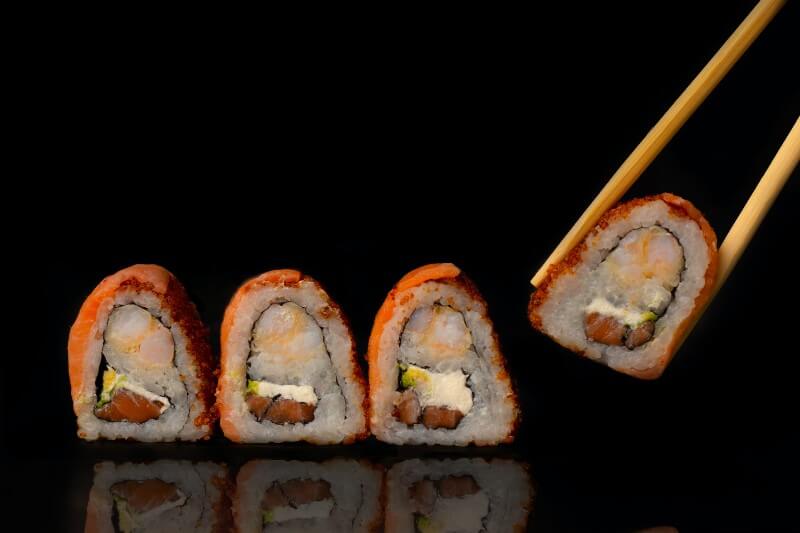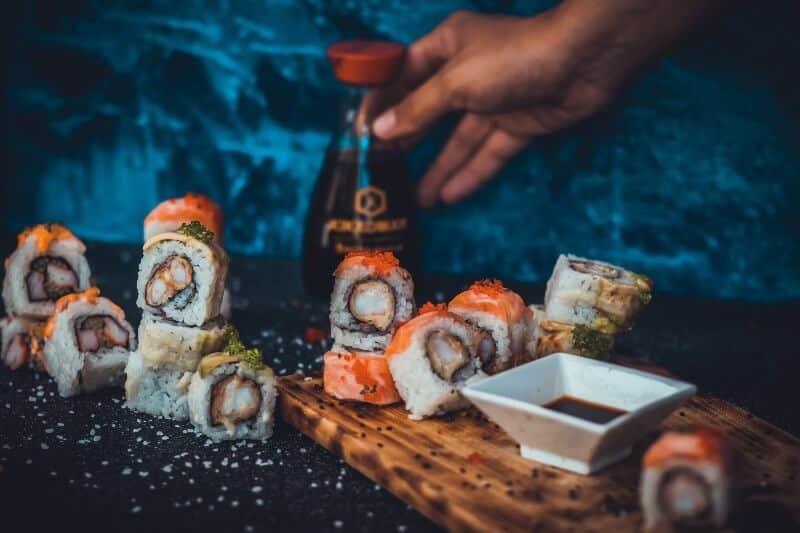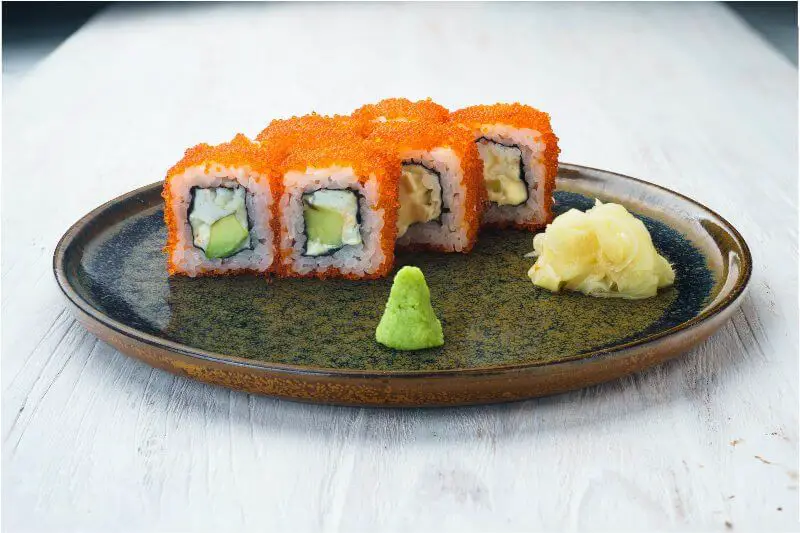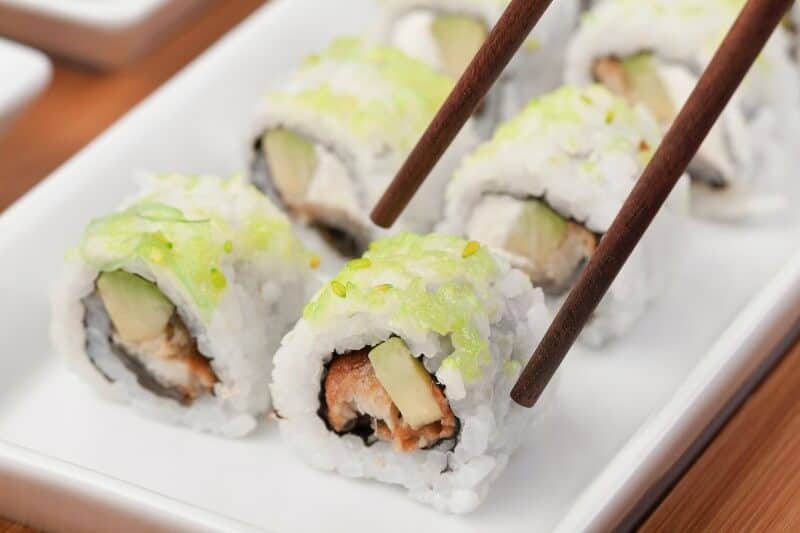“Baby fish jelly balls.”
My niece, whenever she eats maki that is topped with or rolled in masago, would meticulously (try) to pick out the tiny pieces one by one, and while doing so would mutter “baby fish jelly balls”. We take credit for her demeanor in eating masago, as we told her previously that those were, in fact, fish eggs. I guess she never forgot that, what a fast learner! 😀
As someone living in Japan for more than half my life, I know masago like the back of my hand. We often see them as garnishes to so many dishes, especially maki or sushi rolls.
Through this post, I hope to help you become acquainted with masago, along with its benefits and how it can further enhance your dishes. While we’re at it, I am also introducing you to its cousins, ikura and tobiko.
All Things Masago
Masago is the Japanese term for capelin roe, which are technically tiny fish eggs. Capelins are endemic to the chilly ocean waters of the North Atlantic, the North Pacific, as well as the Arctic. Capelin roe or masago is smaller than common fish eggs, and measures only around a millimeter for its diameter.
Masago has a light, pale yellowish color (unlike its cousins tobiko or ikura) therefore it is usually colored in orange, to enhance its appearance and become more appetizing and aesthetically-pleasing on any dish. Masago is most often what they consider the final touch or garnishing, which furnishes sushi rolls or any nigiri that much-needed spunk when it comes to flavor and texture. Mixing masago with a light cream results in the infamous and very flavorful masago sauce.
In case you are wondering, fish eggs can be used interchangeably, though purists have a specific dish a certain fish egg is dedicated to. While we can definitely substitute masago with other fish eggs, let’s take a look at how masago, ikura, and tobiko are so much alike, yet different at the same time.
Masago Versus Ikura (Caviar) Versus Tobiko
All three of these are eggs or what we call fish roe, but each one derives from diverse types of fish. The uniqueness of the texture, flavor, and most importantly, the price, is attributed to the fish type the roe comes from.
Masago is perhaps one of the well-known varieties of fish roe, but it’s certainly not the only kind that is available. Tobiko and caviar are two more fish roe types that are enjoyed because of their distinctive flavor, and their nutritional content.
While most of you are already acquainted with the exquisite caviar, have you ever heard of or tried tobiko? Similar to masago, tobiko is another type of fish roe, but it is extracted from the flying fish. It is small, with a reddish-orange shade, and has that smoky taste that you will recognize as soon as you taste it.
Masago differs further from tobiko because the former is cheaper, tinier in diameter, and its flavor is a bit subtle. On another note, tobiko is similar to masago because it is like your all-around fish roe, which can be used in several dishes, including tamago or egg sushi (tamago, masago, please don’t get confused). Since tobiko is slightly higher in terms of price point, masago is often used as a substitute.
Now, for the connoisseurs, the terminology caviar usually pertains to a delicacy created using the eggs of any fish in the wild sturgeon, or if we are going to be more scientific, the Acipenseridae family of fishes. There are definitely more affordable varieties of caviar in the market, as some caviar are produced using fish roe from the American paddlefish or even salmon.
Fish roe used in caviar are generally cured with salt, which you can consume fresh, or even pasteurized. You might often see caviar as part of the hors-d’œuvre, or in lavish dinners as they are spread on saltines, crackers, or bread crisps, as appetizers or garnish.
What Are The Nutrients Packed In Masago?
Being as raw as it is, the classic masago offers so many nutritional benefits, such as:
- It is your natural supply of vitamin D. Believe it or not, there are only very few actual food sources for Vitamin D, that’s why supplements are being sold everywhere! This vitamin is needed by the body for calcium absorption, to strengthen our bones.
- Masago also has high Omega-3 content. Masago is rich in omega-3 fatty acids, plus a number of health benefits, as with other fish and fish-derived foods. These lipids control inflammation and prevent blood coagulation. Higher omega-3 fat diet can also help inhibit cardiac problems. Please note, that these are parts of shared research, and in case of health concerns, you need to consult with your doctor.
- Masago contains very little mercury. Some fish like mackerel have significant mercury content, but for masago the level is much lower since capelin is smaller in size.
Enhance Your Food And Diet With Some Masago
- Whip up some masago sauce. This sauce is a blend of light cream plus masago, giving off that creamy and delicious taste. This sauce is commonly used on spaghetti in Japan.
- Mix it into your maki center, for that added flavor and crunch.
- Garnish your sushi rolls with a couple of teaspoons of masago. “Garnish” is indeed the most prevalent use for masago, adding vibrant colors and crunch to your sushi roll, like the California maki.
- Mix together cheese, 3 tablespoons of masago, and fruit slices on a platter, for an instant appetizer set.
- You can also use masago to further enhance the flavor of your rice dishes.
- Use masago as topping or garnish for your poke bowls.
- Add some masago to your noodle dishes.
- Top your steamed, fried, or grilled fish with masago, to add more flair to its flavor.
- Mix masago and wasabi, add some sesame dressing or spicy mayonnaise, to add a unique taste to your sushi rolls.
Masago Watch Outs
Sadly, masago is not for everyone! Here are some reasons why:
Potential Risk Of Allergy
Masago is a fish / seafood product, and should naturally be avoided by people with allergies to fish and shellfish. Masago can induce adverse responses for some persons without allergies to seafood. This includes rashes, airway tightening and lowered blood pressure.
High Level Of Sodium
The salt content of the masago is relatively high, as is the case for other peach roe. Masago is also frequently mixed with salt plus a bit of soy sauce to level up its taste.
This significantly raises the finished product’s salt level. For folks with cardiac issues or blood pressure problems, they need to limit their consumption of masago, or, upon consultation, might need to completely avoid it.
Issues With Sustainability Owing To Roe Consumption
If you’re an environmental advocate, you might not be too pleased with this. Since capelin fish are popular in our kitchens, the stock of capelin has declined dramatically in recent years. The pregnant female capelin is a huge feat to harvest.
The succeeding lines of capelin will also be lost, and both male and female species will become scarce, and ultimately, disappear. The capelin is a “prey” fish for other predators, and it plays a vital part of the food chain.
People Also Ask
What Is Masago In Sushi?
Masago is often known as the smelt roe, and is edible “Mallotus villosus” (simply: capelin fish). It is frequently used to coat the exterior of sushi and maki, and also to fill sushi. Usually colored with orange, or red dye, masago is pale-yellow as I mentioned earlier.
Masago is one of the most valued sushi ingredients. Just using a little quantity of these little orange balls turns a plain sushi platter into something opulent, and elegant.
Is Masago The Same As Caviar?
The luxurious caviar and masago are the same in the sense that they are both fish eggs or roe, but they come from distinct types of fish. Fish eggs harvested from the sturgeon fish are regarded as authentic caviar, which means, in a technical sense, masago cannot be considered caviar.
Both types of roe are commonly used as garnish, and not as the primary component of dishes. I would like to stress that not only is caviar bigger (about pea-size), but it is also highly expensive!
What Do Masago Eggs Taste Like?
Masago has a savory, mild flavor that works well with several dishes. Try to add this nutrient-enriched fish roe to your sauces, as topping to your seafood pasta, or simply folded into some spring rolls, and experience its unique flavor while maximizing all the nutrients that it provides.
Is Tobiko The Same As Masago?
Both are commonly seen in sushi rolls. Masago is capelin roe, while eggs or roe from the flying fish are what we refer to as tobiko. Masago is somewhat tinier, with a slight yellow hue. Tobiko is, on the other hand, bigger, lighter, and tastier.
Masago has a similar taste to tobiko, but with less crunchy texture. One major difference is that masago is definitely cheaper, and many restaurants utilize masago to replace tobiko, since they look somewhat similar anyway. Tobiko has this bright-red color, but can also be dyed to appear red, or even black or green.
Conclusion
I hope you learned something from this post. I realized just now that I miss writing about Japanese cuisine! I will try to write more for my next posts.
For now, I hope when you grab that next maki or sushi roll, you’ll be able to tell if it’s tobiko, ikura, or masago – or shall we say, baby fish jelly balls? Ciao!

